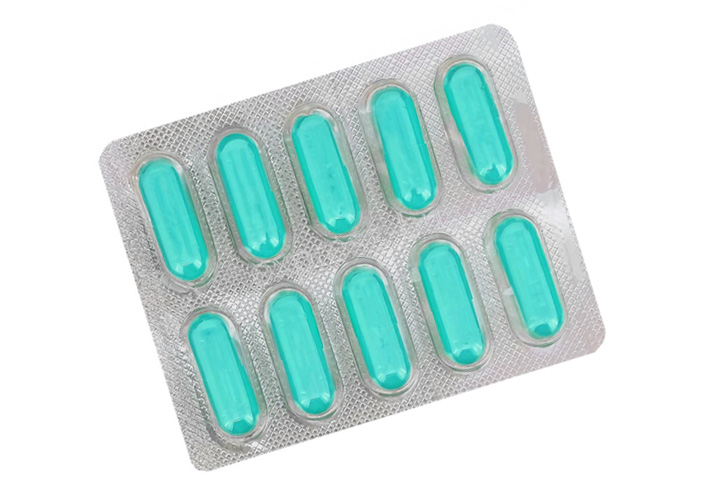Vibramycin
These are based on both the antibacterial activity and pharmacokinetic properties of doxycycline.
Indications taking into account both the position of this antibiotic in the range of antibacterial products currently available and up-to-date knowledge of resistance in bacterial species.
They are limited to the following infections:
- brucellosis
- pasteurellosis
- pulmonary, genitourinary and ophthalmic Chlamydia infections,
- pulmonary and genitourinary mycoplasma infections,
- rickettsioses,
- Coxiella burnetii (Q fever),
- gonorrhoea,
- ENT and bronchopulmonary Haemophilus influenzae infections, particularly acute exacerbations of chronic bronchitis,
- treponemes (in syphilis, tetracyclines are only indicated in cases of allergy to beta-lactam antibiotics),
- spirochetes (Lyme disease, leptospirosis),
- cholera,
- moderate and severe inflammatory acne and the inflammatory component of mixed acne.
Rosacea, whether presenting as skin or eye symptoms.
Unique circumstances
Post-exposure prophylaxis and curative treatment of anthrax.
What Does Vibramycin Contain?

Active substance Scored tablet:
Doxycycline 100 mg *
* per unit dose
Active ingredients: Doxycycline
Excipients: Magnesium stearate, Colloidal anhydrous silica, Microcrystalline cellulose, Dehydrated microcrystalline cellulose.
Forms and Strengths
Pale yellow, round, scored tablet, engraved "VN" on one side.
5 tablets in blister packs (PVC/Aluminium).
How To Take
Adults
Subjects weighing more than 60 kg
- 200 mg per day in one dose
Subjects weighing less than 60 kg
- 200 mg on the first day
- 100 mg on subsequent days in a single dose
Special cases:
Acute gonorrhoea
Adult males
- 300 mg on the 1st day (in 2 doses) followed by 200 mg per day for 2 to 4 days
- either a single dose of 500 mg or two doses of 300 mg given 1 hour apart.
Female adults
- 200 mg daily
Primary and secondary stages of syphilis
- 300 mg daily in 3 doses for at least 10 days.
Uncomplicated urethritis, endocervicitis, rectitis due to Chlamydiae trachomatis 200 mg daily for at least 10 days.
Acne
100 mg daily for at least 3 months. In some cases, a half-dose treatment may be used.
Rosacea, whether presenting as skin or eye symptoms
100 mg daily for 3 months. No clinical data are available beyond three months' treatment.
Special situations
Anthrax: This involves post-exposure prophylaxis and treatment for symptomatic patients who are eligible for oral therapy, either as initial treatment or as a follow-up to intravenous therapy: 200 mg/day in two doses.
The duration of treatment is 8 weeks where exposure to anthrax is proven.
Children over 8 years of age
- 4 mg/kg/day.
Special situations
AAnthrax: This involves post-exposure prophylaxis and treatment for symptomatic patients who are eligible for oral therapy, either as initial treatment or as a follow-up to intravenous therapy: 4 mg/kg/day in two doses not exceeding the adult dose (200 mg/day).
When exposure to anthrax is confirmed, the treatment duration is set at 8 weeks.
Method of administration
Administer in the middle of a meal with a glass of water (100 ml) and at least one hour before bedtime.
Take the tablets
- either swallowed as they are with a sufficient quantity of water;
- or diluted in half a glass of water. In the latter case, it is advisable to shake the tablets well after dispersing them in the water, to ensure that all the medicine is swallowed. The yellow colour is normal, that of the active ingredient.
Side Effects
Possible side effects:
- Photosensitisation reaction
- Skin rash
- Erythroderma
- Angioedema
- Allergic reaction
- Allergic urticaria
- Skin pruritus
- Pericarditis
- Anaphylactic reaction
- Rheumatoid purpura
- Exacerbation of lupus erythematosus
- Intracranial hypertension
- Dental dyschromia
- Enamel hypoplasia
- Digestive disorders
- Nausea
- Epigastralgia
- Diarrhoea
- Anorexia
- Glossitis
- Enterocolitis
- Anogenital candidiasis
- Dysphagia
- Esophagitis
- Esophageal ulceration
- Haemolytic anaemia
- Thrombocytopenia
- Neutropenia
- Eosinophilia
Skin and subcutaneous tissue disorders
Photosensitisation reactions, rash, very rare cases of erythroderma, photo-onycholysis.
Kidney and urinary tract disorders
Extra-renal hyperazotemia, which is associated with an anti-anabolic effect and may be increased by association with diuretics, has been reported with tetracyclines. This hyperazotemia has not been observed to date with doxycycline.
Immune system disorders
Allergic reactions including rash, urticaria, anaphylactic reactions, pericarditis, pruritus, angioedema, and rheumatoid purpura.
Nervous system disorders
Mild intracranial hypertension in adults has been reported during treatment with tetracyclines. Therefore, treatment should be discontinued if increased intracranial pressure is suspected or observed during treatment with doxycycline.
Gastrointestinal disorders
Dental dyschromia or enamel hypoplasia if administered to children under 8 years of age.
Digestive disorders (diarrhoea, nausea, epigastralgia, enterocolitis, anorexia, glossitis, genital or anal candidiasis).
Dysphagia, oesophagitis and oesophageal ulceration may occur, favoured by administration in a supine position and/or with a small quantity of water.
Haematological and lymphatic system disorders
Cases of haematological disorders have been described during treatment with tetracyclines (haemolytic anaemia, thrombocytopenia, neutropenia, eosinophilia).
Precautions
- Cutaneous erythema
- Increased intracranial pressure
- First trimester pregnancy
Due to the risk of photosensitisation, it is advisable to avoid direct exposure to sunlight and UV rays during treatment, which should be discontinued if erythema-like skin symptoms appear.
Because of the risk of oesophageal damage, it is important to ensure that the following conditions of administration are observed.
Drug interactions
Contraindicated combinations
Retinoids (systemic route)
Risk of intracranial hypertension.
Combinations subject to precautions for use
Enzyme-inducing anticonvulsants
Decrease in doxycycline plasma concentrations due to increased hepatic metabolism. Clinical monitoring and possible adjustment of doxycycline dosage.
Didanosine
Decreased digestive absorption of cyclins due to an increase in gastric pH (presence of an antacid in the DDI tablet). Take didanosine at a distance from cyclins (more than 2 hours, if possible).
Iron (salts of), oral route
Decreased digestive absorption of cyclins (complex formation).
Take iron salts at a distance from cyclins (more than 2 hours, if possible).
Gastrointestinal topical agents (magnesium, aluminium and calcium salts, oxides and hydroxides)
Reduces the digestive absorption of cyclins.
Take gastrointestinal topicals at a distance from cyclins (more than 2 hours, if possible).
Oral anticoagulants
Increased oral anticoagulant effect and risk of haemorrhage.
Check prothrombin levels more frequently and monitor INR. Dosage of oral anticoagulant may need to be adjusted during and after treatment with cyclin.
Combinations to be taken into account
Zinc salts
Reduces the digestive absorption of cyclins.
Zinc salts should be taken at a distance from cyclins (more than 2 hours if possible).
Particular problems of INR imbalance
There have been many reports of heightened activity in oral anticoagulants among patients treated with antibiotics. Factors such as the patient's age, general health, and the presence of infection or inflammation seem to increase the risk. It can be challenging to differentiate between the effects of the infection itself and the treatment on the imbalance of INR levels. However, specific types of antibiotics are more frequently associated with this issue, including fluoroquinolones, macrolides, cyclines, cotrimoxazole, and certain cephalosporins.
Not applicable.
When should Vibramycin not be taken?
- Children under 8 years of age
- Pregnancy from the second trimester
- Exposure to the sun
- Exposure to UV rays
- Breast-feeding
This medicine must never be used in the following situations:
- if you are allergic to tetracycline antibiotics,
- in children under the age of eight due to the risk of permanent tooth discolouration and hypoplasia of the dental enamel,
- in combination with systemic retinoids.
Pregnancy and Breastfeeding
This medicine must not be used during breast-feeding, in pregnant women from the 2nd trimester of pregnancy.
Animal studies have shown no evidence of teratogenic effects. Based on these findings, a malformative effect in humans is not anticipated. So far, substances known to cause malformations in humans have been found teratogenic in animals across well-conducted studies in two species. Clinical trials involving the use of cyclins in a limited number of pregnant women have not yet identified any specific malformative effects. However, more research is necessary to fully understand the implications of exposure during pregnancy.
Administration of cyclins during the second and third trimesters exposes the foetus to the risk of staining of milk teeth.



